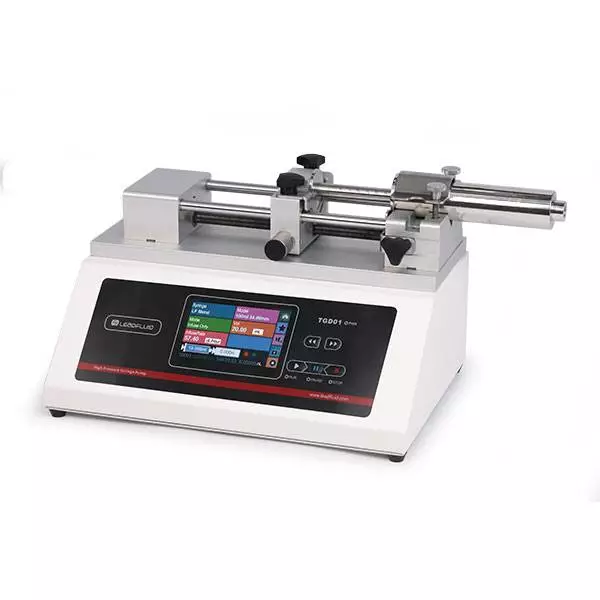Double Syringe Pump: Precision Fluid Delivery for Various Applications
Introduction
Fluid delivery systems play a crucial role in a wide range of industries, requiring precise and controlled dispensing of fluids. The double syringe pump, a specialized pumping device, offers enhanced capabilities in fluid handling and is increasingly being utilized in diverse applications. In this article, we will explore the main applications of the double syringe pump and delve into its advantages, highlighting its impact on industries such as healthcare, research, and biotechnology.
Understanding the Double Syringe Pump
The double syringe pump is a sophisticated fluid delivery system that employs two syringes to precisely control the dispensing of fluids. It consists of two syringe barrels, each equipped with a plunger, which are driven by a motorized mechanism to deliver fluids with high accuracy and repeatability. The double syringe pump is designed to handle various fluid types, including viscous liquids, solutions, and suspensions.
II. Main Applications of the Double Syringe Pump:
- Biomedical and Pharmaceutical Research:
The double syringe pump plays a crucial role in biomedical and pharmaceutical research, facilitating precise fluid delivery in applications such as:
a. Drug Infusion Studies: Researchers utilize the double syringe pump to precisely control the infusion of drugs or experimental compounds into animal models for pharmacokinetic and pharmacodynamic studies.
b. Microdialysis: In microdialysis experiments, the pump enables controlled delivery of perfusion fluids through a microdialysis probe, allowing for continuous sampling and monitoring of biochemical markers in tissues. - Analytical Chemistry and Instrumentation:
The double syringe pump finds extensive use in analytical chemistry and instrumentation, where accurate fluid delivery is critical for sample preparation and analysis. Key applications include:
a. Liquid Chromatography: The pump is employed in high-performance liquid chromatography (HPLC) systems to precisely control the mobile phase flow rate, enabling accurate separation and analysis of analytes.
b. Sample Introduction in Mass Spectrometry: In mass spectrometry, the double syringe pump is used for introducing samples and standards into the ionization source at a controlled rate, ensuring reproducible results. - Microfluidics and Lab-on-a-Chip Systems:
The precise fluid control offered by the double syringe pump is highly beneficial in microfluidic devices and lab-on-a-chip systems, enabling various applications, including:
a. Cell Manipulation: The pump facilitates the precise delivery of cell suspensions, culture media, or reagents into microfluidic channels for cell sorting, encapsulation, or analysis.
b. Droplet Generation: Double syringe pumps are utilized to create and control the flow of immiscible fluids, leading to the generation of uniform droplets for applications in droplet-based microreactors and high-throughput screening. - Industrial and Manufacturing Processes:
The double syringe pump is finding increased use in industrial and manufacturing settings, offering precise and controlled fluid dispensing for applications such as:
a. Adhesive Dispensing: The pump system allows for accurate and repeatable dispensing of adhesives, sealants, or bonding agents in industries like electronics, automotive, and packaging.
b. Coating and Surface Treatment: The pump enables precise delivery of coatings, surface treatments, or protective films, ensuring uniform coverage and desired characteristics in applications such as electronics manufacturing and surface engineering.
Advantages of the Double Syringe Pump
- Precise and Accurate Fluid Delivery: The double syringe pump offers high precision and accuracy in fluid dispensing, allowing for controlled volumes and flow rates. This level of control ensures reproducibility and consistency in various applications.
- Programmability and Automation: The pump’s motorized mechanism and programmable control enable automation and precise control over fluid delivery parameters. This feature enhances process efficiency, reduces human error, and allows for integration with other automated systems.
- Compatibility with Various Fluids: The double syringe pump can handle a wide range of fluid types and viscosities, making it versatile for diverse application requirements. It can accommodate both aqueous and non-aqueous solutions, suspensions, and viscous fluids.
- Compact Design and Ease of Use: The compact size and user-friendly interface of the double syringe pump make it easy to operate and integrate into existing setups. Its simplicity and reliability contribute to increased productivity and reduced downtime.
Conclusion
The double syringe pump is a powerful fluid delivery system that offers precise control and accuracy in various applications. Its impact spans across healthcare, research, biotechnology,dual syringe pump and industrial processes. By harnessing the advantages of the double syringe pump, industries can achieve enhanced process efficiency, improved reliability, and greater control over fluid handling, leading to advancements in research, development, and manufacturing.

